
‘Afraid of the water’? Life in a city that dumps billions of litres of raw sewage into lakes and rivers
10 billion litres of sewage are dumped into Winnipeg’s lakes and rivers each year. Some...
Imagine driving down a two-lane road on a sunny day in northeastern Ontario, just east of North Bay’s city centre. To your right, dandelions bloom bright yellow, dotting the lawns of red brick apartments. On your left is Circle Lake, one of the many bodies of water nearby, buzzing with birds and dragonflies. About a kilometre south, you reach the new site of Industrial Plastics Canada, a factory opening in July 2023.
Local news coverage of the opening has been sparse, mostly touting that the plant will bring economic benefits, including up to 35 new jobs to a town with an unemployment rate more than double the national average. Less has been said publicly about the company’s plans to manufacture — or perhaps just use, depending which Industrial Plastics employee is speaking — polytetrafluoroethylene (PTFE), a Teflon-like product that falls into a larger group of chemicals called per- and polyfluoroalkyl substances (PFAS).
PFAS are commonly known as “forever chemicals” because they can generate hazardous waste which, if not disposed of carefully, contaminates air, water and soil where it can remain for about 1,000 years. That there has been little information published about Industrial Plastics’ plans, including a glaring lack of an environmental assessment, is worrying community members.
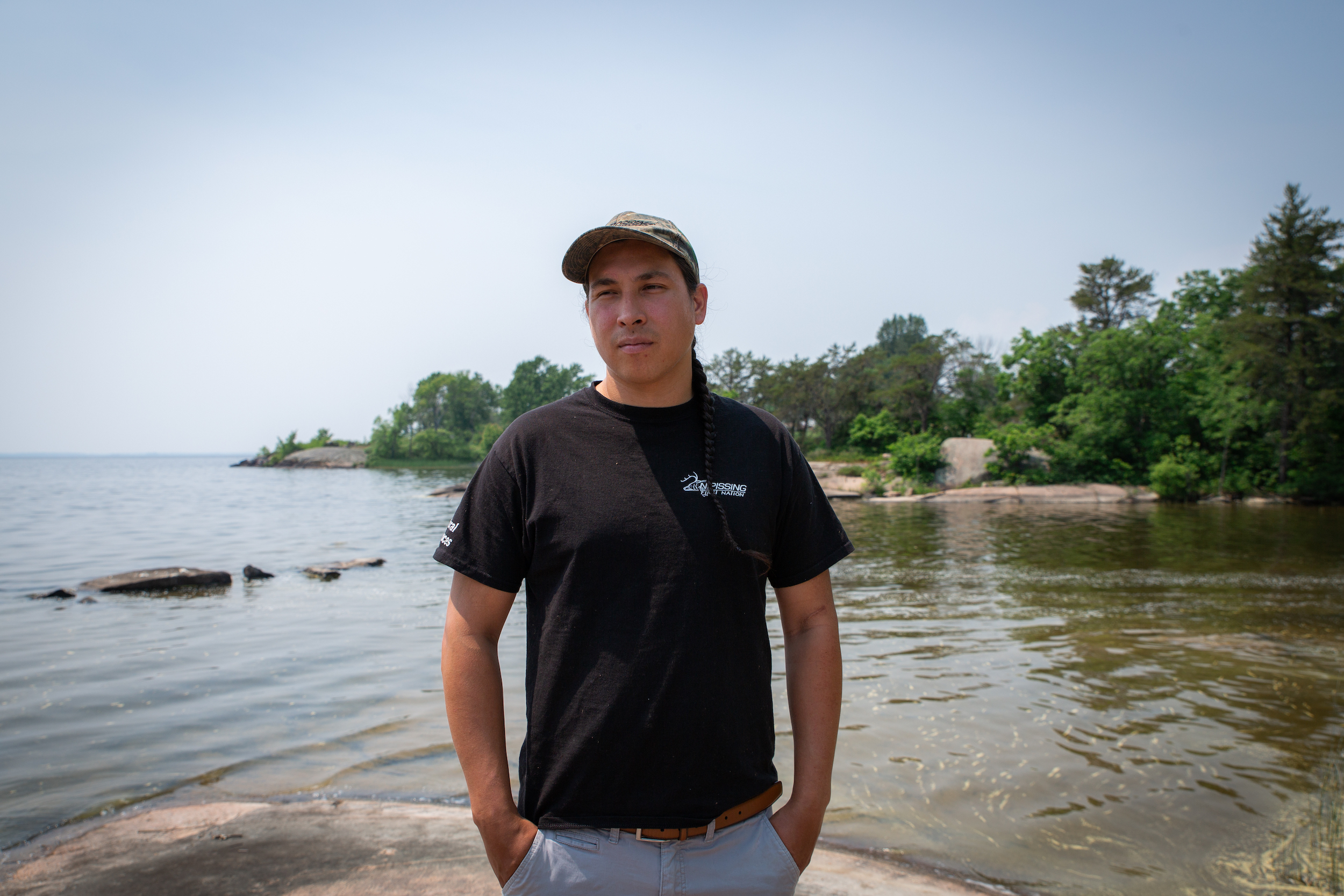
“My concern is, usually these areas that have higher levels of PFAS are not only the factories, but the areas around these factories, and where they end up when the consumers are done with the product,” Curtis Avery, environment manager of Nipissing First Nation, told The Narwhal. “When the manufacturer has byproducts, where do they go?”
“These industrial areas are often surrounded by lower income buildings and peoples and communities,” Avery said. “Had they had some information about what’s going on and what it entails with these forever chemicals, I think they’d be concerned too.”
A company spokesman told The Narwhal the use of polytetrafluoroethylene at the factory will not produce waste and poses “no risk.” The company also says fluoropolymers aren’t as dangerous as other per- and polyfluoroalkyl substances and are “considered safe, non-bioaccumulative and non-toxic.”
Thousands of substances classified as per- and polyfluoroalkyl substances are used to make everything from medical equipment to waterproof clothing. Statistics Canada reports almost all Canadians already have PFAS in their bodies, including in remote regions such as the Arctic and subarctic. While Health Canada is in the process of figuring out how to approach a broad range of per- and polyfluoroalkyl substances, it currently only regulates a fraction of those that exist.
The United States Environmental Protection Agency lists potential health risks of exposure including reproductive problems like infertility; developmental effects in children; increased risk of prostate, kidney and testicular cancers; and weakening of the body’s immune system, including reduced vaccine response. The Canadian government says PFAS can be transferred through the placenta during pregnancy and infants and children can be exposed through ingestion of human milk.
Ecosystems are affected, too. Studies have shown exposure to per- and polyfluoroalkyl substances can cause reduced seed germination, stunted growth and reduced photosynthetic activity in plants. The chemicals can then bioaccumulate — build up in the organs of living creatures — in the food chain. In the district of Nipissing, that poses a risk to more than 15 protected areas and the people who live off the land, like Avery’s nation.
“We’re the most vulnerable group of people that utilize our lands — the lands are our grocery stores … if these are being impacted, we need to know,” Avery said.
Especially since the region and its waterways are already coping with forever chemical contamination from decades past.
From the early 1970s to the mid-1990s, the Department of National Defence used a foam containing PFAS to train firefighters across Canada, including near the North Bay Jack Garland Airport. In 2016, after the North Bay Parry Sound District Health Unit learned PFAS had been identified in waterways around the city, a consulting firm called Stantec assessed the impacts in soil and groundwater.
Indeed, Stantec found PFAS from the foam had contaminated surface water, soil, bedrock and groundwater surrounding the site. Forever chemicals had found their way into the municipal drinking water system and private wells, as well as Trout Lake, Lake Nipissing, Lees, Dorlan, Chippewa and La Vase creeks and surrounding areas. In 2020, CBC reported at least 26 National Defence sites had known or suspected PFAS contamination and as many as 420 airports across the country could be a problem as well.
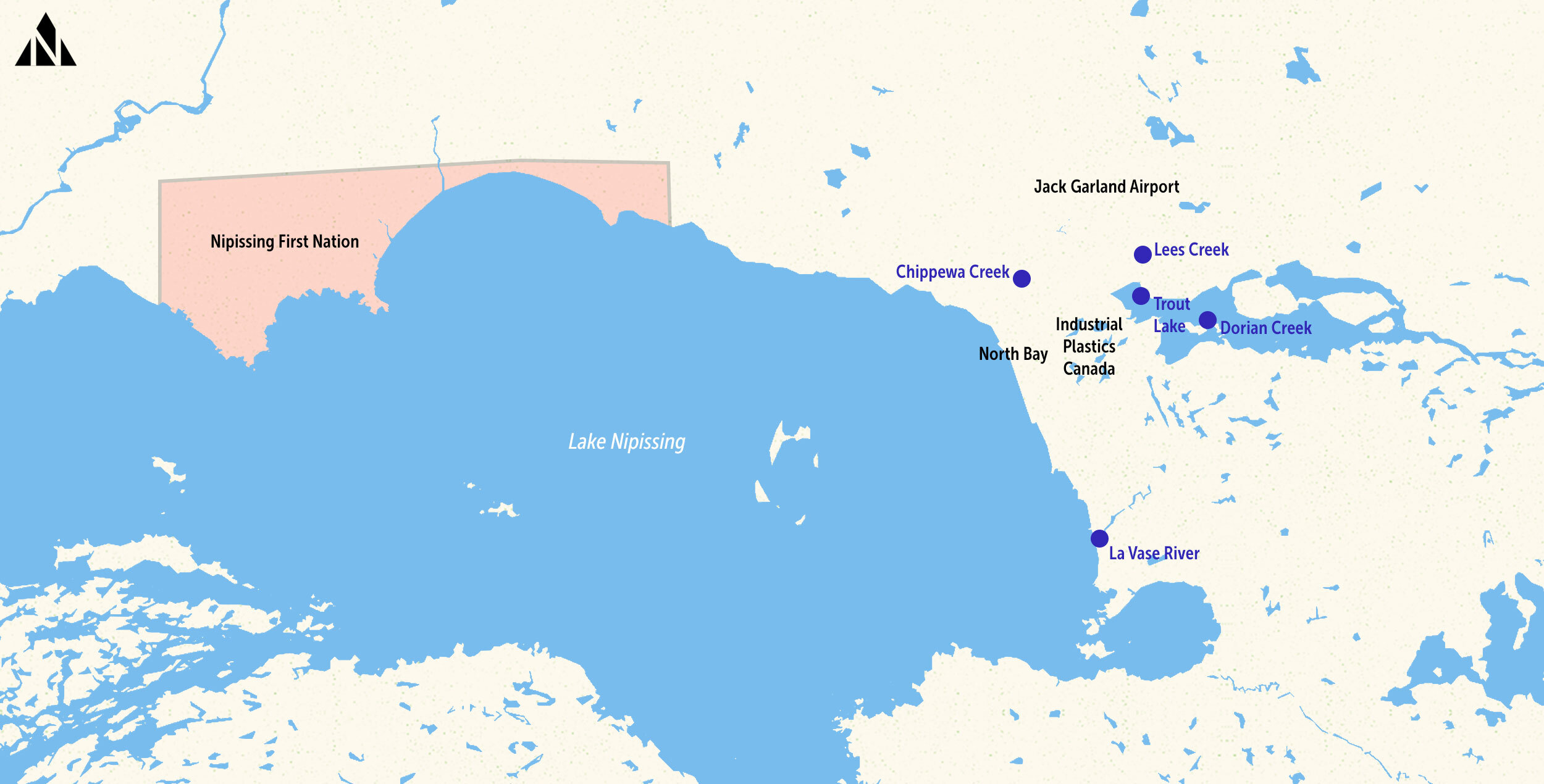
In Nipissing District, Stantec recommended expanding water sampling in the area, a suggestion echoed in a 2017 report by Dr. Jim Chirico, then-medical officer of health and executive officer for the local health unit. Chirico also recommended remediating the site as soon as possible and regular communication with the community about the state of the water and the site.
But 2017 was the last time the health unit provided an update on the PFAS info page on its website. Five years later, there is still an advisory against drinking or fishing from Lees Creek, which is closest to the contaminated site and drains into other bodies of water. Residents still get their private wells tested regularly.
That’s because all the city has done so far is test the contamination, not remediate it: in 2021, North Bay announced it would fund up to $600,000 of a $20-million study to evaluate water treatment options, with National Defence picking up the rest of the tab. The study got underway in late 2022 and a report was due this spring, but city spokesperson Gord Young told The Narwhal the study isn’t finished yet.
Once it is, council will have to review the report before the public can see it. Sometime after that, remediation can officially begin.
Meanwhile, North Bay residents who develop symptoms related to water contamination may not be able to get a diagnosis — let alone treatment — due to a shortage of doctors in the region. Other small North American towns have seen the effects of leaving such conditions unmonitored and untreated. In 2016, Merrimack, New Hampshire, learned of forever chemical water contamination dating back decades. A community health survey a year later showed higher-than-average incidence of a slew of health concerns, with those under 18, women, industrial workers and longtime residents most likely to be affected. The survey also noted a “critical gap in information” for PFAS-exposed residents without a doctor to guide them.
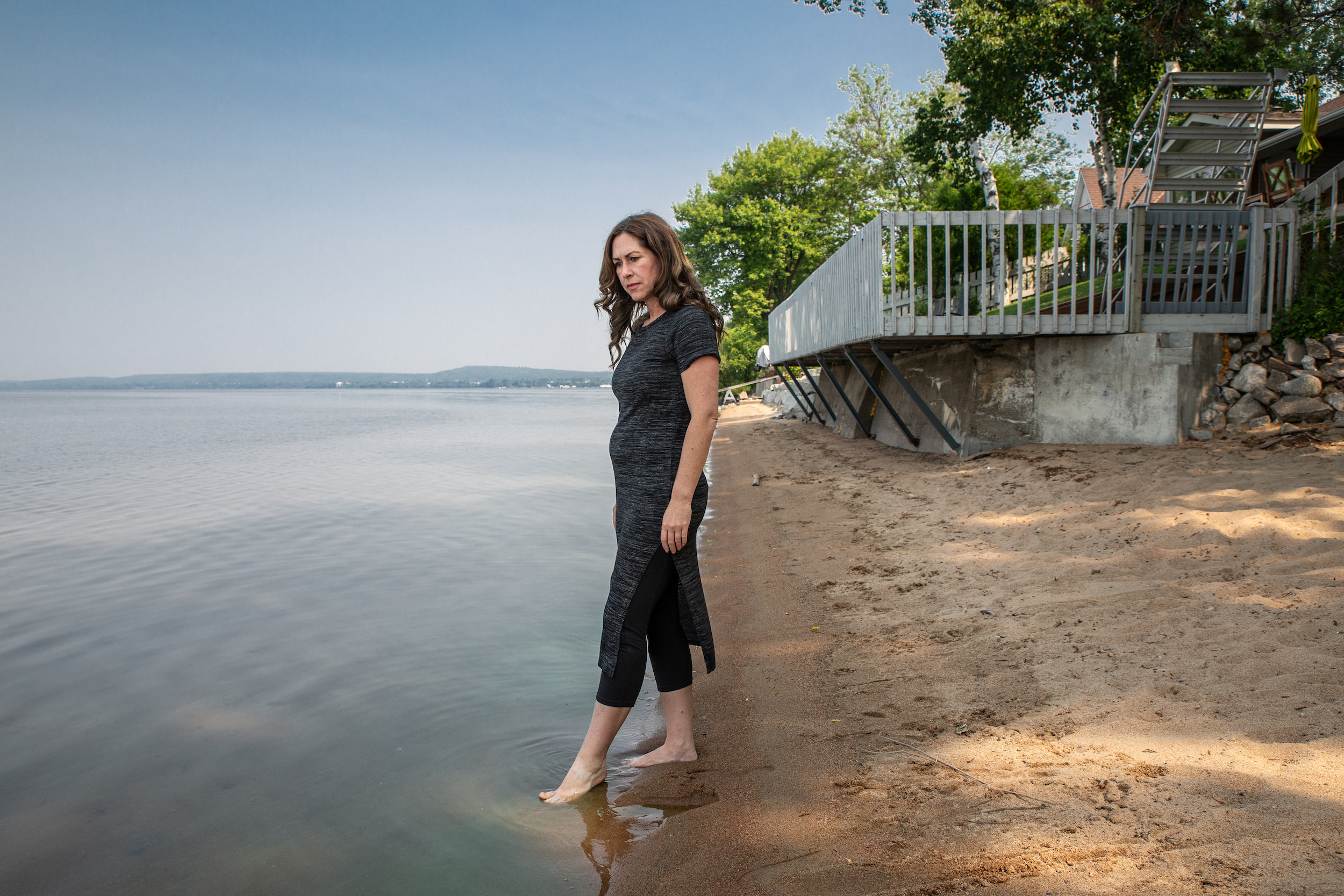
Environmental anthropologist Carly Dokis lives in North Bay with her husband and three children. She has worked with Indigenous populations, including Anishinaabe communities in northern Ontario, on public participation in environmental management for things like mines and mass contamination sites. She said the invisible nature of PFAS is part of what makes them insidious.
“When you look at a mine, for example, you can see it and say, ‘That’s obviously disruptive to our ecosystem.’ So the public demand for environmental assessments tends to be obvious, right?” Dokis said. “But these things are invisible pollutants, which then tend to attract less public awareness.”
Dokis said she is worried about the lack of information made available to the public prior to the new plastics factory opening: she would expect a notice on Ontario’s environmental registry, for example, and didn’t find anything. She said none of her colleagues were aware of a local project of this scale involving PFAS, which she said is unusual.
The provincial ministries of the environment and economic development did not respond to questions about the lack of a notice on the registry. The government is required to post information about certain business permits, like those needed for emissions or wastewater, under the Environmental Bill of Rights, but the Doug Ford government has consistently violated its obligation to do so through its tenure.
“It’s concerning that these things can become approved without public involvement,” Dokis said. “Historically, things have been approved in municipalities all over the country that have gone really terribly and are now highly contaminated. Then, that falls on the city to clean up and those are our tax dollars being spent to clean up highly contaminated sites that were approved without any regulatory oversight.”
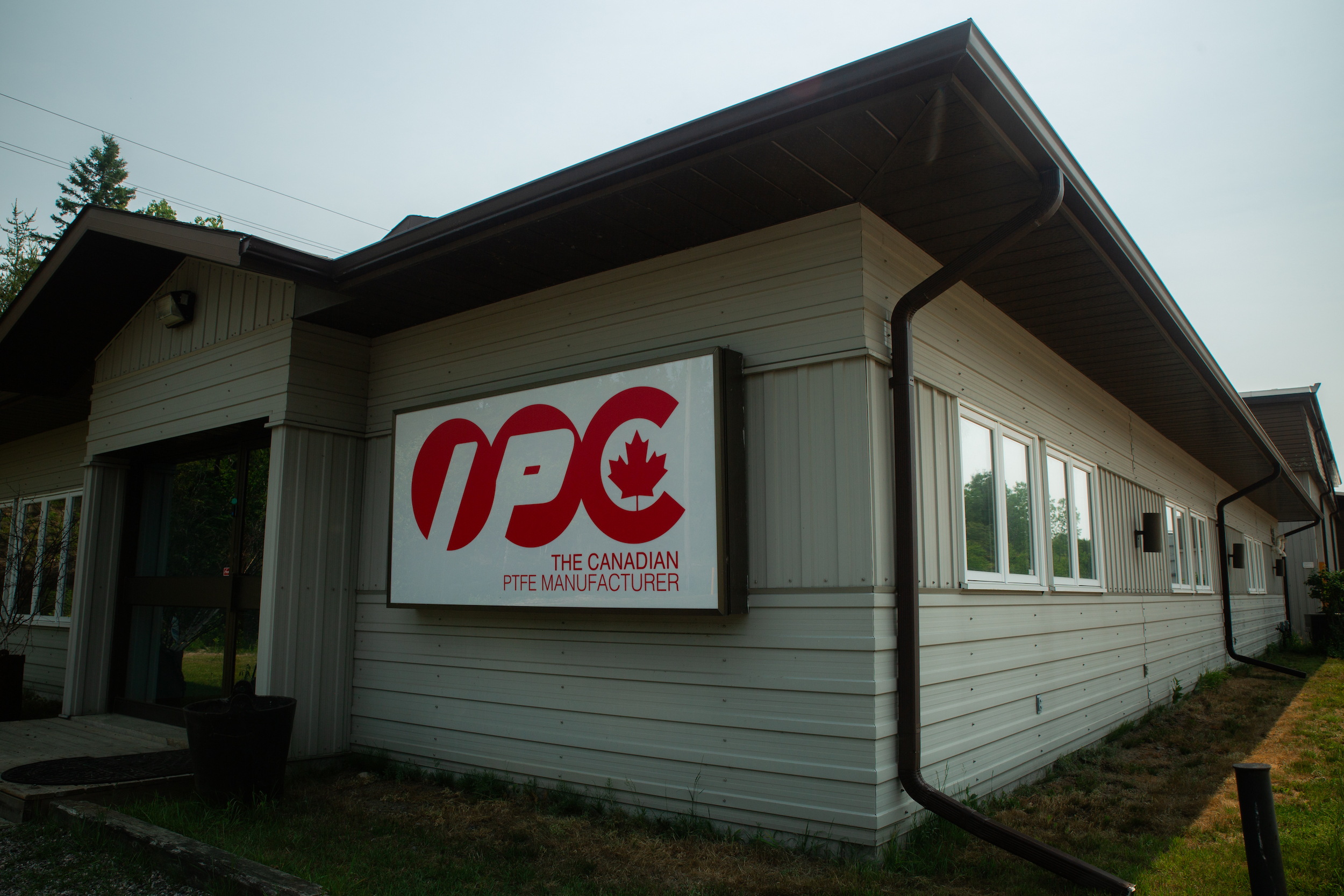
Industrial Plastics Canada is part of a conglomerate headquartered in Italy called Guarniflon, owned by Mazza Holding. It has a presence across Europe as well as in India and China, proudly billing itself one of the “largest worldwide manufacturers of PTFE products.” PTFE, or polytetrafluoroethylene, is a part of a subgroup of PFAS known as fluoropolymers, or fluoroplastics.
The Narwhal had two phone interviews with Industrial Plastics Canada’s president, Andrea Arlati, who also took this reporter on a tour of the factory. Later, Arlati asked that his comments not be used, saying that English is not his first language. The Narwhal then emailed questions to Guarniflon’s headquarters in Italy, which were answered by Marco Nocera, quality and customer care manager. Nocera said Arlati has been with Guarniflon for almost 20 years, including managing its Louisiana factory since 2006 and leading the Canadian expansion project, which meant meeting with North Bay city officials and “industry partners” to establish the new factory.
That process didn’t include a federal environmental assessment — as a private sector project, the Industrial Plastics factory isn’t mandated to undertake one. Private projects are subject to regulations concerning specific chemicals, but polytetrafluoroethylene is not currently one of the per- and polyfluoroalkyl substances regulated by Health Canada.
Some companies choose to voluntarily commission an independent environmental study and share it with stakeholders. Avery of Nipissing First Nation said he hasn’t seen one for the Industrial Plastics factory, though it is his job to manage the land and bodies of water directly adjacent to it.
The Narwhal asked both Arlati and Nocera if Industrial Plastics had undergone any sort of environmental assessment for its factory. Arlati was unclear about whether his company had conducted one: “I’m not involved in all of that.”

Nocera wrote: “We at [Industrial Plastics Canada] comply with all government regulations and standards to ensure the safe production of our plastics … These mandates are set by organizations such as the Ministry of the Environment and the Ministry of Labour, and we strictly adhere to them.”
Vic Fedeli, MPP for Nipissing and Ontario’s Minister of Economic Development, Job Creation and Trade, did not reply to The Narwhal’s questions about what his government has done to ensure the company will operate safely, or that the people of North Bay and Nipissing First Nation aren’t exposed to more forever chemicals.
“Our office recommends you reach out to the company directly for further information,” Fedeli’s spokesperson replied via email.
Mayor Peter Chirico (brother of former health unit head Jim Chirico) also did not respond when asked what efforts have been made to inform the public about Industrial Plastics coming to town. Young, spokesperson for the City of North Bay, said the factory was not subject to a variety of planning process requirements, including the Ontario Planning Act or North Bay’s official plan.
Young also suggested “reaching out to the company directly” as “the best source for information about its operations.”
When asked how Guarniflon guards against any negative health effects of its use of PFAS globally, Nocera again pointed to government. “As per government regulations, we strictly adhere to guidelines and standards to ensure the safety of our workers and the public. We strive to minimize any negative impact based on these protocols,” he wrote.


Industry maintains fluoropolymers are safer than other PFAS products. In an email, Arlati shared a YouTube video posted by an India-based chemical company, Gujarat Fluorochemicals, making that argument, as well as a March 2018 review of scientific information on fluoropolymers that states they are “polymers of low concern” and should be considered separately from other PFAS by regulators.
But opinions differ: Fe de Leon, a researcher with the Canadian Environmental Law Association, has worked extensively on toxic substances, particularly in the Great Lakes basin, and on the federal chemicals management plan. She cautions against viewing fluoropolymers as PFAS-free.
“They are being marketed as non-PFAS (and likely an alternative to PFAS) but are not completely free of PFAS,” de Leon said. “Trying to figure out which is the least problematic PFAS of these chemicals, I think we’re beyond that.”
“Trying to figure out which is the least problematic PFAS of these chemicals, I think we’re beyond that.”
Fe de Leon, Canadian Environmental Law Association
In 2020, the journal Environmental Science and Technology published a paper titled “Are fluoropolymers really of low concern for human and environmental health and separate from other PFAS?” It reported risks all along the PTFE supply chain, from its import, production, processing, emissions and use through its disposal.
The multinational research team concluded that “Given fluoropolymers’ extreme persistence … and a high likelihood for human exposure to PFAS, their production and uses should be curtailed except in cases of essential uses.”
The team added its analysis “does not find a scientific rationale for concluding that fluoropolymers are of low concern for environmental and human health.” In a presentation also posted to YouTube, head researcher Rainer Lohmann of the University of Rhode Island argues fluoropolymers should concern regulators.
When asked about this research, Nocera said much of the danger posed by fluoropolymers was due to “degradation,” or how products break down over an “entire life cycle”and that this was an issue for government.
“Disposal of such items is outside of our control and falls under the jurisdiction of the governments of Canada, specifically the Ministry of Environment,” he wrote. The Narwhal asked Nocera if he meant that Guarniflon is not responsible if its products become toxic after they are sold or disposed of: in response, the company sent a letter from an Ontario-based lawyer stating it would make “no further comment on these matters.”
While Health Canada doesn’t currently regulate PTFE, it has said “caution should be applied when discussing the lack of toxicity for the entire group of fluoropolymers.”

Both Arlati and Nocera contradicted past statements by Industrial Plastics management about what the company plans to do at the North Bay facility. In August 2022, general and sales manager Steve Fowler told the BayToday that “We are going to be making a product here called PTFE,” in a 30,000-square-foot facility.
But the Industrial Plastics executives said the company only uses, not manufactures, polytetrafluoroethylene. “PTFE comes in the sugar form. And we just shape it in a solid form,” Arlati said. “It’s like if you go to Walmart, and you buy flour to make bread. You don’t make the flour. You make the bread.”
The Industrial Plastics website says Guarniflon and its parent company, Mazza Holding, have processed 10,000 tons of raw material polytetrafluoroethylene throughout its global operations. Its North Bay plant is expected to partially open this July.
The Narwhal asked both executives how North Bay was chosen for the new factory. Nocera said the city was “the ideal location for our expansion into Canada. It has all the necessary factors to support a business, yet small enough to foster a tight-knit community.” Arlati said one reason his company looked to northern Ontario for its first Canadian plant is potential government funding from the Northern Ontario Heritage Fund Corporation, a provincial body that issues grants for economic development in the region.
Arlati said the North Bay plant will be in full production by January 2024, with future expansion dependent on grants. He also said the people in North Bay have a “mentality one generation behind” — when asked for clarification, he said he was referring to an excellent “work ethic.” Nocera did not respond to the Narwhal’s questions about this statement.

Nocera repeated more than once that Guarniflon and Industrial Plastics follow all regulations to “meet the necessary safety and efficacy standards.”
“We stay up-to-date on all developments through our corporate departments and initiatives that lead industry research and liaise with government to establish or update safety and environmental standards,” he wrote. He also said the company’s products meet a variety of safety standards, including KTW certification, a German requirement for plastic that comes in contact with drinking water.
But scientific knowledge is full of blank spots in regard to the ever-growing list of the thousands of chemicals classified as per- and polyfluoroalkyl substances and their health effects. And regulatory bodies at every level of Canadian government have been slow to take on the challenge. At present, Health Canada prohibits the manufacture, use, sale, offer for sale and import of only three subgroups of PFAS. And even those prohibitions have exemptions, meaning many are still in circulation.
“Regulatory compliance will always lag behind new science and processes to get chemicals and materials of concern into new restrictions,” Beverley Thorpe, former director of Greenpeace International, told The Narwhal. “The fluoropolymer industry knows that PFAS is now a global concern.”
The European Union’s chemicals agency wants to label the many thousands of per- and polyfluoroalkyl substances as a single class of chemicals and ban them, which could alter one of the safety standards Nocera said the company currently meets. Health Canada is also figuring out “an approach to address PFAS as a class in Canada,” spokesperson Joshua Coke told The Narwhal via email.
“That is why the fluoropolymer industry is fighting hard to be exempt from within any class-based approach,” Thorpe said. European lobbying has been documented extensively in “The Forever Pollution Project,” a collaboration between 18 newsrooms on the continent that included a map of thousands of sites where PFAS are known to exist, including Mazza Holding’s Italian, Romanian and French factories.
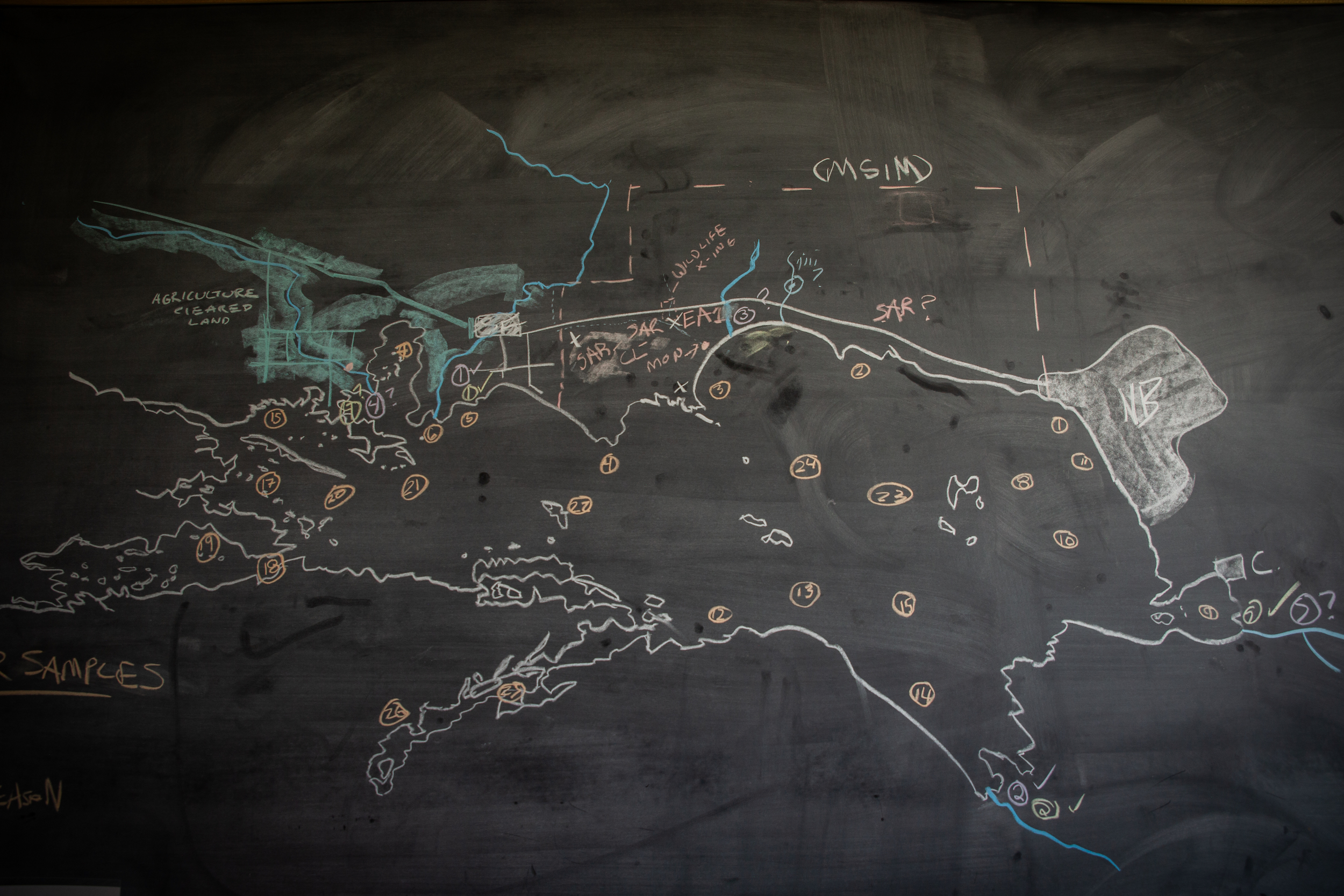
In May, Health Canada issued a draft report on per- and polyfluoroalkyl substances two years in the making that proposes all substances in the class of PFAS are toxic to the environment and human health, including fluoropolymers like PTFE. If this holds in the final report, which Coke said will come “as quickly as possible,” the government will develop “risk management options.”
Coke said the entire life cycle of the chemicals is being considered. When asked if industry had been lobbying the department, Health Canada said only that public consultation is open until July 19.
De Leon said “class-based” regulatory steps are necessary, but also won’t solve existing contamination.
“The problems associated with these chemicals are ongoing,” de Leon said. “You can turn off the tap on its use or its production, [but] because many of these chemicals have been used in thousands of products, you are going to have to deal with them from a life cycle approach because they are ultimately released into the environment and eventually … end up in waste. That’s where a lot of the evidence is starting to show the presence of those types of chemicals in our environment.”
In some ways, Health Canada’s draft report is already behind — it says there are “more than 4,700 substances” that fit the definition of PFAS, while De Leon said her organization works with 12,000 types and counting. “But the federal government has a really important role,” she said. “The fact that they’ve designated these chemicals as being problematic is key.”
One task for Health Canada is setting an acceptable level of per- and polyfluoroalkyl substances in drinking water, measured in nanograms per litre. As part of its current process, the department published a “draft objective” level of 30 nanograms per litre in February. That’s less than half of what Ontario currently recommends: 70 nanograms per litre for just 11 different PFAS, and that’s just a suggestion, not a binding regulation.
North Bay’s drinking water was 60 nanograms per litre in April 2023 according to Young, who said testing is done quarterly. He expects it could take up to a year before Health Canada’s draft is finalized, and new rules come into play.
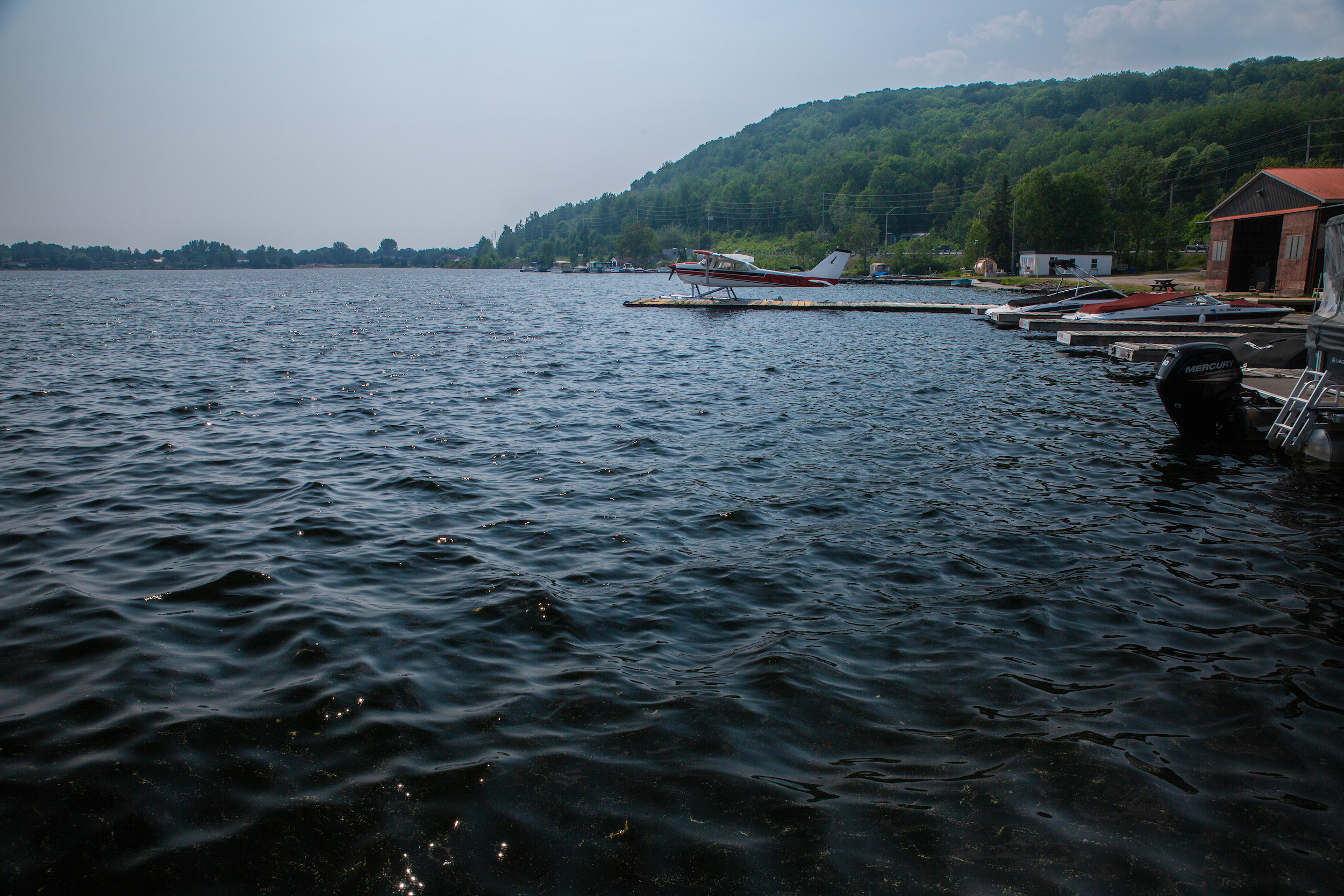
Federal drinking water guidelines are set in collaboration with provinces and territories, which then set regulations — currently, only British Columbia and Ontario have any kind of regulatory framework for the forever chemicals in drinking water. Municipalities are left to do the actual monitoring, with the federal government responsible for First Nations’ water quality.
That leaves North Bay positioned to face new regulations even as it still needs to clean up significant existing contamination.
“In North Bay, for a number of years, they not did not want to focus on PFAS. They knew that there was some evidence showing it as a problem, but they didn’t know what their role was,” de Leon said. With contamination a problem across the country, she said many are watching how the city copes. “Because of the public pressure, the public health unit had to engage but that’s not the case with every community that may be facing the same problem.”
Meanwhile, as the Industrial Plastics factory opens, it looks like the region home to Nipissing First Nation and North Bay have forever chemicals in its past, present — and foreseeable future.
Get the inside scoop on The Narwhal’s environment and climate reporting by signing up for our free newsletter. On a warm September evening nearly 15...
Continue reading
10 billion litres of sewage are dumped into Winnipeg’s lakes and rivers each year. Some...

Court sides with Xatśūll First Nation, temporarily halting Mount Polley mine waste expansion

Break out the champagne: Emma’s storied life and leadership in journalism has earned her the...
